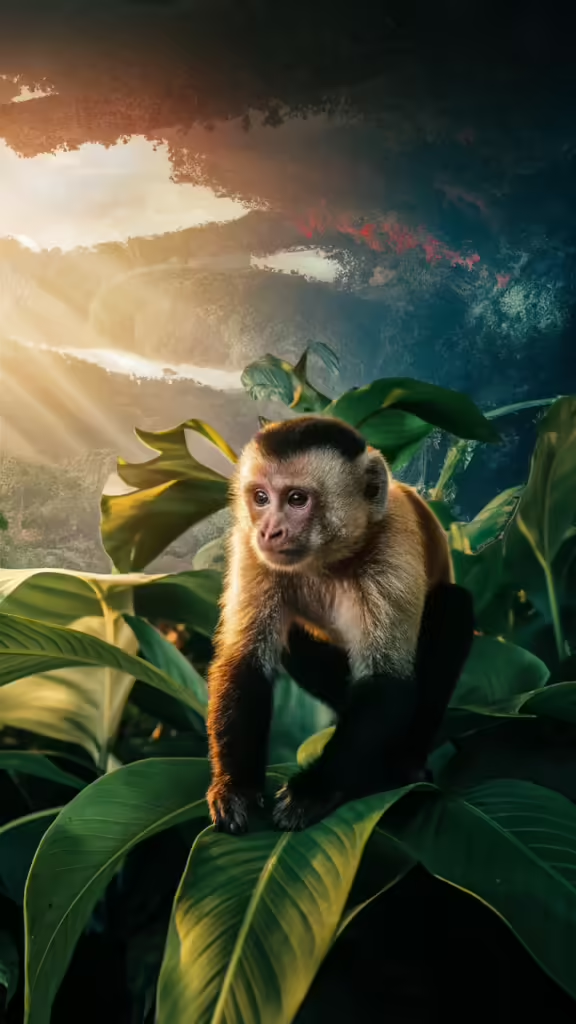
Capuchin monkeys are primarily found in the tropical rainforests of Central and South America. These vibrant ecosystems provide an abundance of food sources such as fruits, insects, and small vertebrates. The dense canopy offers them ample shelter and protection from predators.
In addition to rainforests, capuchin monkeys can also be found in dry forests and mangroves. Their adaptability allows them to thrive in various environments, as long as food and shelter are available. This versatility is one of the reasons why capuchin monkeys are widespread across their native range.

The dense foliage of the rainforest canopy is crucial for the survival of capuchin monkeys. It provides them with numerous hiding spots from predators and ample opportunities for foraging. Capuchins are known to be highly intelligent and use tools, which they often find within their diverse habitat.
Mangrove forests, with their unique mix of salt and freshwater, also serve as a habitat for capuchin monkeys. These areas are rich in crustaceans, which add variety to their diet. The intricate root systems in mangroves offer excellent climbing and nesting opportunities for these agile primates.

Capuchin monkeys are arboreal, meaning they spend most of their time in trees. The branches and leaves of the rainforest canopy provide them with a playground for social interactions and foraging activities. Their prehensile tails are particularly useful for navigating this complex environment.
In drier forest habitats, capuchin monkeys are known to adapt their behavior and diet to the available resources. They often descend to the ground to search for food, showcasing their versatility. This adaptability ensures their survival even in less dense forest regions.

Water sources are a critical component of capuchin monkey habitats. Rainforests typically have abundant rivers and streams, which provide hydration and attract various prey items. Capuchins are often seen near these water bodies, utilizing the resources they offer.
In contrast, capuchins in drier habitats might rely on seasonal water sources. These monkeys are adept at finding water even during dry periods, showcasing their survival skills. Access to water is essential for maintaining their health and supporting their diverse diet.

The social structure of capuchin monkeys is influenced by their habitat. In lush rainforests, large groups can thrive due to the abundance of food and shelter. These social groups engage in grooming, play, and coordinated foraging, strengthening their social bonds.
In habitats where resources are scarcer, capuchin groups may be smaller and more dispersed. This helps reduce competition for food and increases their chances of survival. The flexibility in their social organization is a testament to their adaptability.

Capuchin monkeys are diurnal, meaning they are active during the day. This behavior aligns with the availability of light and their primary food sources. The daylight also helps them avoid nocturnal predators, making their daytime activities safer.
The varied habitats of capuchin monkeys offer different challenges and opportunities during the day. In rainforests, they can exploit the vertical space for foraging, while in drier areas, they might travel more horizontally. This daily activity pattern is crucial for their survival and well-being.

Capuchin monkeys have a varied diet that is closely tied to their habitat. In rainforests, they consume a mix of fruits, insects, and small animals. This diverse diet is supported by the rich biodiversity of the rainforest.
In drier habitats, their diet may shift to include more seeds, nuts, and tubers. These food sources are more readily available in such environments. The ability to adjust their diet based on their habitat ensures that capuchin monkeys can thrive in different settings.

The lush vegetation of rainforests provides capuchin monkeys with plenty of nesting sites. They often build their nests in the forks of trees, using leaves and branches for comfort and protection. These nests are essential for resting and raising their young.
In contrast, capuchins in other habitats might use rock crevices or dense shrubbery for nesting. The choice of nesting site is influenced by the need for safety and accessibility to food sources. This adaptability in nesting behavior highlights their resourcefulness.

Predation pressure varies across different capuchin monkey habitats. In dense rainforests, they must be wary of larger predators like jaguars and birds of prey. The thick canopy provides some protection, but vigilance is always necessary.
In more open habitats, the threats might come from terrestrial predators such as snakes and large cats. Capuchins use their agility and intelligence to avoid these dangers, often relying on alarm calls to alert the group. Their awareness and group cooperation are key to their survival.

Human activities have a significant impact on capuchin monkey habitats. Deforestation and habitat fragmentation are major threats, particularly in rainforests. These activities reduce the available space and resources for capuchins, leading to population declines.
Conservation efforts are essential to protect the diverse habitats of capuchin monkeys. Establishing protected areas and promoting sustainable land use can help preserve their environments. Public awareness and support are crucial for the success of these initiatives.